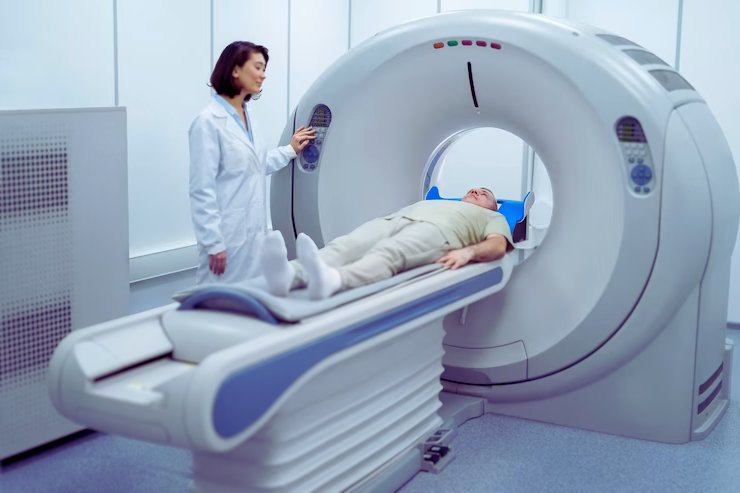The Evolution of CT Tech
Computed Tomography (CT) technology has played a pivotal role in diagnosing and monitoring a wide range of health conditions.

Advancements Revolutionizing Medical Imaging:
In the field of medical imaging, Computed Tomography (CT) technology has played a pivotal role in diagnosing and monitoring a wide range of health conditions. Over the years, CT scanners have undergone remarkable advancements, offering unprecedented imaging capabilities and improving patient care. In this article, we will explore the evolution of CT tech, discussing its transformative impact on healthcare and highlighting the latest innovations shaping the future of medical imaging.
The Birth of CT Scanning:
The inception of CT scanning dates back to the 1970s when Sir Godfrey Hounsfield and Allan Cormack pioneered the development of the first CT scanner. This groundbreaking technology provided cross-sectional images of the human body by combining X-ray measurements from multiple angles. The initial CT scanners were slow, limited in image quality, and posed significant radiation risks.
Advancements in Image Quality:
One of the most notable advancements in CT technology has been the improvement in image quality. Modern CT scanners utilize advanced algorithms and sophisticated detectors to produce high-resolution, three-dimensional images of the human anatomy. This enhanced clarity has revolutionized the diagnostic process, allowing radiologists to detect abnormalities with greater precision and accuracy.
Reduced Radiation Dose:
Concerns regarding radiation exposure during CT scans prompted researchers and manufacturers to focus on reducing the associated risks. Today, low-dose CT protocols, such as iterative reconstruction techniques and dose modulation algorithms, have significantly minimized radiation exposure without compromising image quality. These advancements ensure patient safety while maintaining the diagnostic efficacy of CT imaging.
Multislice CT Scanners:
Multislice CT scanners represent a major milestone in CT technology. Unlike their predecessors, these scanners can capture multiple slices of the body simultaneously, allowing for faster scanning times and increased throughput. This speed improvement has been particularly valuable in emergency settings, where quick and accurate diagnoses are critical.
Dual-Energy CT:
Dual-energy CT is another groundbreaking innovation that has expanded the capabilities of CT scanners. By simultaneously acquiring two sets of images at different energy levels, this technology enables the differentiation of tissues and the identification of specific materials, such as calcifications and iodinated contrast agents. Dual-energy CT has proven particularly useful in oncology, cardiovascular imaging, and evaluating renal stones.
Cone Beam CT:
While traditional CT scanners have been predominantly used in hospitals and imaging centers, cone beam CT has emerged as a valuable tool in the dental and maxillofacial fields. This technology provides high-resolution 3D imaging with a lower radiation dose, allowing for precise evaluations of dental structures and facilitating the planning of implant surgeries, orthodontic treatments, and endodontic procedures.
Artificial Intelligence in CT:
The integration of artificial intelligence (AI) algorithms into CT scanners has propelled the field of medical imaging to new heights. AI-powered image reconstruction techniques, automated image analysis, and computer-aided diagnosis have significantly enhanced the speed and accuracy of CT interpretation. Machine learning algorithms can detect subtle abnormalities, assist in the early detection of diseases, and optimize treatment planning, thereby improving patient outcomes.
Portable and Point-of-Care CT:
Traditional CT scanners have been large and immobile, restricting their use to hospitals and specialized imaging centers. However, recent advancements have led to the development of portable and point-of-care CT scanners. These compact devices enable imaging directly at the patient's bedside, in intensive care units, and even in remote locations, thereby facilitating faster diagnoses and reducing the need for patient transfers.
Fusion Imaging:
Fusion imaging combines CT with other imaging modalities such as positron emission tomography (PET) or magnetic resonance imaging (MRI), providing a comprehensive evaluation of anatomical structures and metabolic activities. This multimodal approach enhances diagnostic accuracy, aids in treatment planning, and improves the assessment of therapeutic response. Fusion imaging has proven particularly valuable in oncology, neurology, and cardiology.
Conclusion:
The evolution of CT technology has revolutionized medical imaging, enhancing diagnostic capabilities, improving patient outcomes, and optimizing healthcare delivery. From improved image quality and reduced radiation dose to the integration of AI algorithms and the development of portable scanners, CT tech has come a long way. As advancements continue to shape the future of medical imaging, we can expect further breakthroughs that will revolutionize healthcare, making diagnoses faster, more accurate, and more accessible to patients worldwide.













